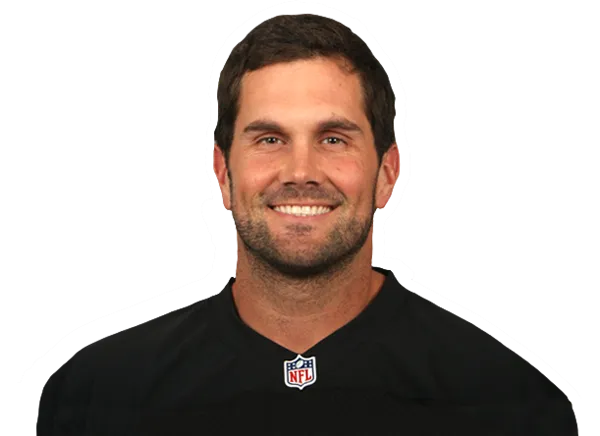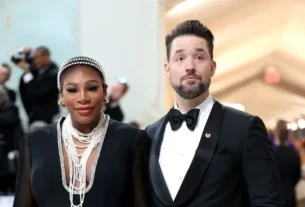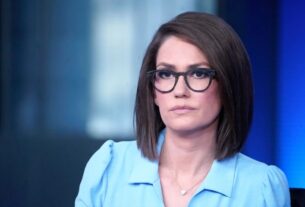From College Glory to the NFL Spotlight
Few names in college football carried as much weight in the early 2000s as Matt Leinart. As quarterback of the USC Trojans, Leinart was the face of college football’s golden era — a Heisman Trophy winner in 2004, a two-time national champion, and the leader of one of the most dominant teams in NCAA history. With his calm presence in the pocket, pinpoint accuracy, and ability to shine under pressure, Leinart seemed destined for NFL greatness.
When he declared for the 2006 NFL Draft, expectations were sky-high. Scouts saw him as a polished passer ready to step into a pro offense. The Arizona Cardinals selected him 10th overall, betting that his college poise and winning mentality would translate to the professional level.
But the NFL, as many college stars have learned, is an entirely different game.
The NFL Years — A Promising Start that Fizzled
Leinart began his professional career with promise. He started several games as a rookie, showing flashes of the intelligence and leadership that made him a college legend. However, the transition to the NFL proved more difficult than expected. The speed of the game, the complexity of defenses, and the physical demands of the pro level quickly exposed weaknesses that had never been apparent at USC.
Injuries also played a significant role. A broken collarbone sidelined him for part of his second season, halting his development at a crucial time. Meanwhile, veteran quarterback Kurt Warner took over and led the Cardinals on a historic run to the Super Bowl. Leinart suddenly found himself as a backup, struggling to regain the starting role that had once seemed guaranteed.
Over the next few seasons, he bounced around the league — from Arizona to the Houston Texans, and later to the Oakland Raiders. Despite flashes of potential in preseason games and practice reports, he never managed to secure a long-term starting job. By 2013, he was viewed as a journeyman quarterback trying to hang on in a league that constantly demands fresh talent.
The End — A Difficult Goodbye
Leinart’s final NFL chapter came in 2013, when the Buffalo Bills signed him during the preseason as a temporary backup. His stint lasted only a few days, but it became one of the defining moments of his career. In a preseason game against the Detroit Lions, Leinart threw multiple interceptions and struggled to move the offense. He later described that night as the moment he knew his football career was over — a humbling and emotional realization for a player who once stood at the pinnacle of the sport.
After being released, Leinart quietly stepped away from professional football. There was no farewell press conference or public announcement — just a quiet exit from the sport that had defined most of his life.
Life After Football
Unlike some athletes who drift into obscurity after retirement, Leinart found new purpose. He transitioned into broadcasting, joining Fox Sports as a college football analyst. His deep understanding of the game and calm, professional demeanor quickly made him a respected voice in sports media. Today, he remains a regular on television, covering the same sport that once made him a household name.
Beyond broadcasting, Leinart has become involved in business ventures focused on athlete branding and development. He co-founded projects that help young athletes build their personal brands, leveraging his experience in both the spotlight and the struggles of post-athletic life.
Leinart has also dealt with health challenges, including hip surgeries, but remains active and fit. Off the field, he has built a stable family life. Married to actress Josie Loren, he is a dedicated husband and father, often sharing glimpses of his family life and his continued support for USC football.
Reflections — Lessons from a Career That Didn’t Go as Planned
In interviews over the years, Leinart has spoken candidly about the pressures of being a top draft pick and the emotional toll of failing to meet public expectations. He acknowledges that his NFL career did not unfold as planned, but he has also expressed gratitude for the lessons learned along the way.
His story reflects the unpredictable nature of sports careers. Talent and accolades can take a player to the doorstep of greatness, but success at the professional level requires an elusive combination of health, opportunity, and timing. Leinart’s humility and resilience after football have earned him a different kind of respect — not as a superstar athlete, but as someone who faced adversity and found meaning beyond the game.
Where He Is Now — The Next Chapter
As of 2025, Matt Leinart remains a familiar face in sports broadcasting, offering analysis on college football and mentoring young players. He continues to work on business ventures that connect sports, technology, and athlete empowerment.
Though his NFL career never matched the hype that surrounded his USC days, Leinart has carved out a meaningful second act — one defined by growth, stability, and perspective.
In many ways, Matt Leinart’s story is no longer about what might have been. It’s about what is: a man who rose to incredible heights, faced hard truths, and emerged with wisdom that goes far beyond the football field.
Why Wasn’t Matt Leinart Good in the NFL?
From College Legend to NFL Question Mark
When Matt Leinart graduated from USC, he wasn’t just another quarterback prospect — he was the quarterback prospect. A Heisman Trophy winner, two-time national champion, and the face of one of the greatest college football dynasties in history, Leinart looked every bit like a future NFL star.
Yet, despite all that promise, Leinart’s professional career never lived up to expectations. Drafted 10th overall by the Arizona Cardinals in 2006, he started only 18 games in seven seasons and threw just 15 career touchdowns. By 2013, he was out of the league entirely.
So what happened? How did a player with such extraordinary college success struggle so much at the next level? The answer lies in a complex mix of physical, mental, and situational factors.
1. The System Shock — College vs. the NFL
At USC, Leinart played in one of the most talent-rich systems in college football history. Surrounded by stars like Reggie Bush, LenDale White, and Steve Smith — and protected by an elite offensive line — Leinart often had all the time he needed to throw.
USC’s offense, under coach Pete Carroll and offensive coordinator Norm Chow, emphasized rhythm and timing. Leinart’s job was to make quick reads and deliver accurate, short-to-intermediate passes to playmakers who could turn them into big gains.
In the NFL, that system vanished. Defensive speed increased dramatically, throwing windows tightened, and opposing pass rushers reached him in seconds. Without USC’s all-star cast and simplified reads, Leinart’s weaknesses — particularly his slow release and average arm strength — were exposed.
2. Limited Arm Strength and Athleticism
One of the most consistent criticisms of Leinart in the NFL was his arm strength. Scouts initially downplayed it, pointing to his accuracy and decision-making, but once he faced professional defenses, it became a major limitation.
Leinart could throw a good spiral and place the ball well in short areas, but his deep passes often lacked velocity. That allowed defenders to close gaps quickly, leading to interceptions or broken-up passes. NFL offenses rely heavily on timing and the ability to “fit” the ball into tight coverage — something Leinart struggled with.
Athletically, he wasn’t mobile enough to compensate. He wasn’t a scrambler or a threat outside the pocket. In an era increasingly favoring mobile quarterbacks who can extend plays, Leinart’s traditional drop-back style made him predictable and easy to pressure.
3. Competition and Circumstance — The Kurt Warner Factor
Timing can make or break an NFL career, and for Leinart, timing was brutal. When he arrived in Arizona, the Cardinals had veteran quarterback Kurt Warner — a former MVP and Super Bowl champion.
Initially, Leinart was the starter, but an injury in his second season sidelined him, giving Warner a chance to reclaim the job. Warner didn’t just reclaim it — he led the Cardinals to a Super Bowl appearance.
Once that happened, Leinart’s fate in Arizona was sealed. He was demoted to backup, and by the time Warner retired, the team was already moving in a new direction. Coaches changed, offensive systems changed, and Leinart never had the consistent support or trust needed to develop.
4. Work Ethic and Personality Questions
While Leinart was never accused of poor character, some within NFL circles questioned his intensity and drive compared to other quarterbacks.
During his USC years, Leinart was known for his Hollywood lifestyle — appearances on talk shows, parties, and celebrity relationships. When that carried over into the NFL, some coaches wondered whether he was fully dedicated to mastering the demanding mental side of the pro game.
Teammates and analysts later commented that Leinart seemed more comfortable being a role player than a franchise leader. In a league where elite quarterbacks obsess over film study, preparation, and leadership, that perceived lack of “killer instinct” became a red flag.
5. Coaching and Development Issues
Leinart’s time in Arizona was marked by instability. He played under multiple offensive coordinators and systems, each with different philosophies. The Cardinals of the mid-2000s were not a consistently stable franchise, which didn’t help a young quarterback who needed patient, long-term development.
Unlike modern teams that build offensive schemes around a young QB’s strengths, Arizona often expected Leinart to adapt to whatever system was in place. That approach made it difficult for him to find rhythm, confidence, or continuity.
6. Injuries and Confidence
A broken collarbone early in his career derailed his momentum. Quarterbacks coming off major injuries often develop hesitation — being less confident under pressure, less willing to take hits, and quicker to check down. Leinart’s early injury came at a pivotal developmental moment and arguably changed the trajectory of his confidence as a starter.
By the time he regained full health, Warner had taken control of the team, and Leinart’s opportunities dwindled. Subsequent stops in Houston and Oakland offered limited playing time, and by 2013, he was fighting just to make a roster spot.
7. The Mental Transition — Pressure and Expectation
Leinart entered the NFL with massive media attention. He was a Heisman winner from a major market school, drafted as a supposed savior for a struggling franchise. The pressure was immense — every throw scrutinized, every decision criticized.
Some players thrive under that pressure. Leinart seemed to shrink from it. By his own admission in later interviews, he felt embarrassed and overwhelmed by his struggles, especially toward the end of his career.
His final appearance — a preseason game with the Buffalo Bills in 2013 — ended with multiple interceptions. Leinart later said that game made him realize his NFL journey was over. It was an emotional moment of acceptance that his football dream hadn’t turned out as planned.
8. Legacy and Lessons
Today, Matt Leinart’s NFL career is often cited as an example of how college dominance doesn’t guarantee professional success. He wasn’t a “bust” in the sense of bad character or effort — rather, he was a highly talented player who simply couldn’t adapt to the physical and mental demands of the NFL game.
Yet, his post-playing life tells a different story. Leinart reinvented himself as a respected college football analyst, businessman, and mentor. He’s open about his struggles, reflecting honestly on what went wrong and how those experiences shaped him into a better person.
Matt Leinart wasn’t bad because he lacked talent — he was bad because the NFL demanded a different kind of quarterback than the one he was trained to be. His success at USC came from mastery of a specific system, surrounded by elite talent, and built on timing and precision. The NFL required a stronger arm, faster reads, adaptability, and relentless competitiveness — qualities that didn’t align with his skill set or personality at the time.
In the end, Leinart’s story is less about failure and more about fit. He was a perfect quarterback for USC — maybe one of the best ever — but the NFL was a different world entirely.
What Is Matt Leinart Doing Now?
Matt Leinart, once one of the most celebrated college quarterbacks in history, has carved out a successful second career in media and sports commentary. Although his NFL journey didn’t live up to the enormous expectations following his Heisman Trophy win at USC, Leinart has remained closely tied to football — both professionally and personally.
From Quarterback to Sports Analyst
Today, Matt Leinart is best known as a college football analyst for Fox Sports. He is a regular member of the popular pregame show Big Noon Kickoff, where he provides insights and analysis on the latest college football matchups. Known for his calm demeanor and deep understanding of the game, Leinart has become a respected voice in college football media.
On air, Leinart brings both player and fan perspectives, often referencing his experiences as a USC Trojan and national champion. His commentary blends personal anecdotes with sharp football analysis, earning him credibility among audiences and peers alike.
Continued Connection to USC
Leinart’s bond with his alma mater, the University of Southern California, remains strong. He frequently supports USC’s football program, appearing at events, promoting recruits, and celebrating the program’s history. Although he doesn’t hold a formal coaching position, Leinart has become an unofficial ambassador for USC football.
He often shares thoughts about the team’s direction, recruiting classes, and overall progress. His words carry weight, as fans and players still view him as one of the university’s all-time greats.
In recognition of his contributions to college football, Leinart has been honored multiple times. He has been inducted into several halls of fame, including the USC Athletic Hall of Fame, the Rose Bowl Hall of Fame, and most recently, the Orange Bowl Hall of Fame in 2024 — a testament to his enduring legacy as one of the most accomplished quarterbacks in college football history.
Family Life and Personal Growth
Off the field, Leinart leads a grounded and family-centered life. He is married to Josie Loren, a former actress turned therapist, and together they are raising their children in California. In 2024, the couple announced they were expecting their third child, adding another chapter to their growing family.
Leinart occasionally shares glimpses of his family life on social media, celebrating milestones and supporting his children’s activities — especially his son Cole, who has followed in his father’s footsteps as a young quarterback prospect. Cole Leinart, a highly regarded high school recruit from the class of 2026, recently committed to play college football at SMU.
Reflections on His Playing Career
Leinart has been candid about his NFL career, acknowledging that his professional journey did not meet the expectations set by his legendary college tenure. Drafted tenth overall by the Arizona Cardinals in 2006, Leinart struggled to adjust to the speed and complexity of the professional game.
In interviews, he has shared that his final preseason stint with the Buffalo Bills in 2013 was emotionally difficult — he realized during that time that his football career was coming to an end. Rather than seeing it as a failure, however, Leinart has expressed gratitude for the opportunities football gave him, both on and off the field.
His perspective today reflects maturity and peace with his path. While his NFL career may not have been storybook-perfect, his post-football journey has shown resilience, adaptability, and a passion for the sport that made him a household name.
Media Personality and Mentor
Beyond broadcasting, Leinart also dedicates time to mentoring young athletes and participating in community events. He has spoken about the importance of leadership, discipline, and mental health for athletes navigating the pressures of sports and fame.
He occasionally collaborates with charitable organizations and sports programs that focus on youth development, showing his desire to give back to the community and help future generations of players succeed both on and off the field.
Legacy and Influence
Matt Leinart’s name remains synonymous with college football greatness. Though his NFL career was brief, his success at USC — where he won a Heisman Trophy, two national championships, and set multiple records — ensures his place among the sport’s legends.
Today, he continues to shape the football conversation through media, mentorship, and his role as a proud USC ambassador. He represents a powerful story of reinvention: a reminder that success in sports is not defined solely by on-field performance, but by the impact an athlete makes long after the final whistle.
In 2025, Matt Leinart stands as a respected broadcaster, devoted family man, and enduring icon of college football. He has successfully transitioned from quarterback to commentator, from athlete to mentor, and from young star to seasoned storyteller. His journey reflects not only the unpredictability of sports careers but also the enduring value of passion, humility, and perseverance.
Who Did Matt Leinart Have a Baby With?
Matt Leinart, the former USC football star and NFL quarterback, has led a life in the public eye — not only for his athletic accomplishments but also for aspects of his personal life that have occasionally drawn media attention. One of the most talked-about parts of his personal journey is his family — including the question of who he had a baby with and what his family looks like today.
Early Years and Relationship with Brynn Cameron
Before his marriage, Matt Leinart was in a relationship with Brynn Cameron, a former standout college basketball player at the University of Southern California (USC). Cameron was a talented athlete in her own right, having played guard for the USC women’s basketball team.
Their relationship attracted attention in the mid-2000s, during Leinart’s early NFL years, following his high-profile college career and Heisman Trophy win. In 2006, the couple welcomed a son, Cole Cameron Leinart.
Although their relationship did not last romantically, both Leinart and Cameron have been publicly praised for maintaining a positive and cooperative approach to parenting. They chose to co-parent their son amicably, focusing on providing him a stable and supportive upbringing despite their separation.
Over the years, Leinart has often spoken warmly about his son, emphasizing the importance of fatherhood and balance between his career and family life.
Marriage to Josie Loren
Years after his relationship with Brynn Cameron, Matt Leinart met Josie Loren, an actress best known for her roles in the television series Make It or Break It and The Mentalist. The two began dating in the mid-2010s and were married in 2018.
Following their marriage, the couple started a family together. They have two sons, and in 2024, they announced that they were expecting their third child. Leinart and Loren have built a family-centered life in California, often sharing small glimpses of their happiness on social media while maintaining a degree of privacy.
Josie Loren transitioned from acting to psychology, becoming a licensed marriage and family therapist. She and Leinart share similar values around family, emotional well-being, and parenting — themes that are often reflected in interviews and public appearances.
Co-Parenting and Family Unity
Despite the complexities that sometimes accompany blended families, Matt Leinart’s story stands out as a positive example of co-parenting and long-term family balance. His oldest son, Cole, has maintained a strong bond with both parents and is now carving out his own path as a rising football player.
Cole Leinart, who attends high school in California, has already made headlines as a quarterback prospect and recently committed to play college football at SMU — following closely in his father’s footsteps. Matt Leinart has openly expressed pride in his son’s achievements and continues to be actively involved in his athletic journey.
Leinart’s family dynamic — blending his son from his earlier relationship with his newer family — reflects his ability to maintain strong relationships rooted in respect and cooperation.
Summary of Matt Leinart’s Family
-
First child (Cole Cameron Leinart): with Brynn Cameron, born in 2006
-
Wife: Josie Loren (married in 2018)
-
Children with Josie Loren: two sons, with a third child announced in 2024
Together, they form a close-knit, blended family that values education, sports, and emotional wellness.
Matt Leinart’s life after football has been defined not only by his successful career as a broadcaster but also by his role as a devoted father and husband. He shares one son, Cole, with former USC basketball player Brynn Cameron, and has since built a loving family with his wife, Josie Loren.
His story — from college star to media personality to family man — highlights a journey of growth, maturity, and commitment to the people who matter most to him.



